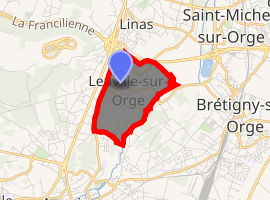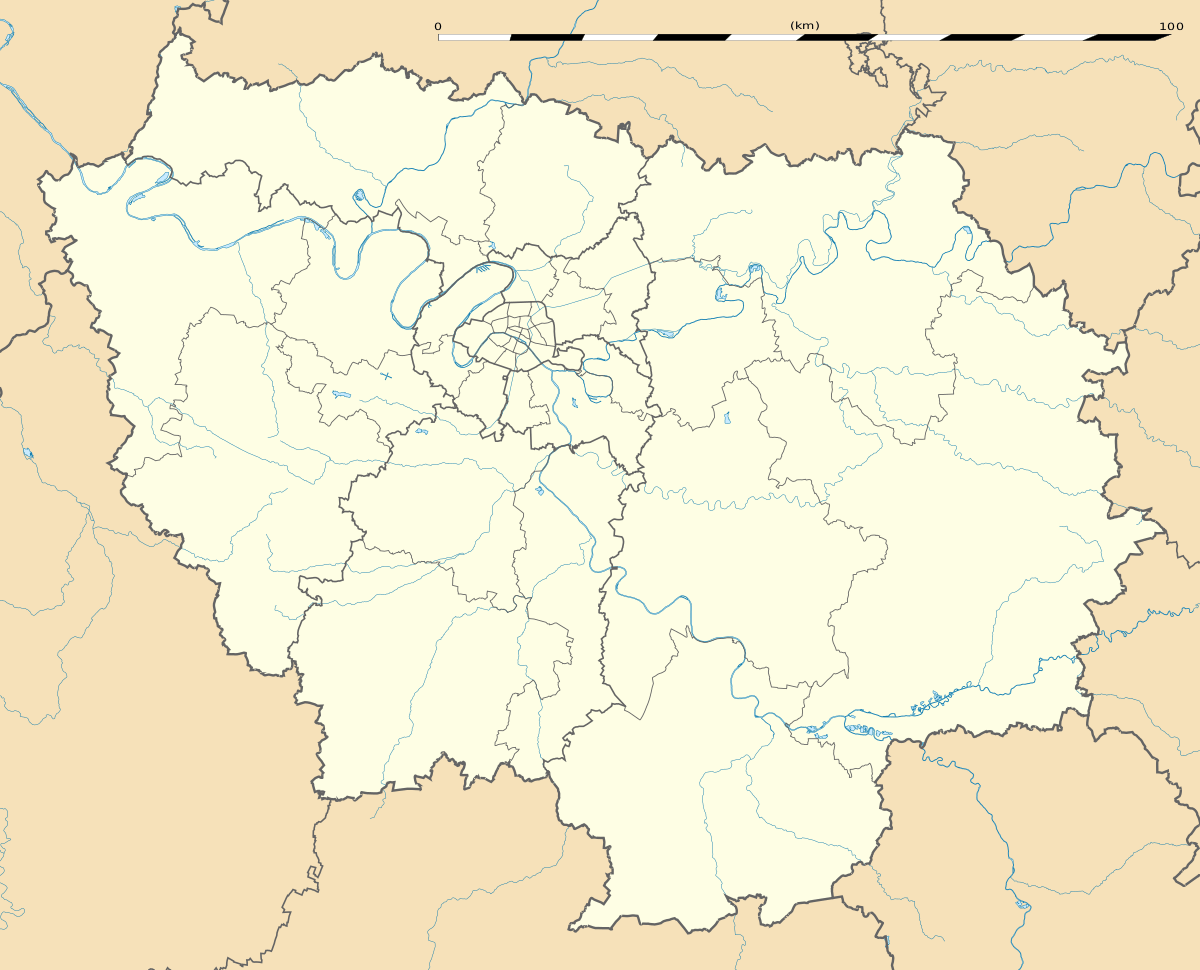Leuville-sur-Orge
Leuville-sur-Orge is a commune 31 km (19 mi) south of Paris, France. It is situated in the Essonne department in the Île-de-France region.
Leuville-sur-Orge | |
|---|---|
The town hall in Leuville | |
.svg.png) Coat of arms | |
Location of Leuville-sur-Orge 
| |
 Leuville-sur-Orge  Leuville-sur-Orge | |
| Coordinates: 48°37′03″N 2°15′57″E | |
| Country | France |
| Region | Île-de-France |
| Department | Essonne |
| Arrondissement | Palaiseau |
| Canton | Arpajon |
| Intercommunality | CA Cœur d'Essonne |
| Government | |
| • Mayor (2008–2014) | Daniel Esprin |
| Area 1 | 2.49 km2 (0.96 sq mi) |
| Population (2017-01-01)[1] | 4,471 |
| • Density | 1,800/km2 (4,700/sq mi) |
| Time zone | UTC+01:00 (CET) |
| • Summer (DST) | UTC+02:00 (CEST) |
| INSEE/Postal code | 91333 /91310 |
| Elevation | 42–92 m (138–302 ft) (avg. 35 m or 115 ft) |
| 1 French Land Register data, which excludes lakes, ponds, glaciers > 1 km2 (0.386 sq mi or 247 acres) and river estuaries. | |
Inhabitants of Leuville-sur-Orge are known as Leuvillois.
Geography
Situated 25 kilometres (16 miles) south of Paris. Neighbouring towns: Linas, Longpont-sur-Orge, Brétigny-sur-Orge, and Saint-Germain-lès-Arpajon. It is served by the RN20 and A104 motorways.
History
In the Middle Ages, Leuville-sur-Orge belonged to the fiefdom of Montlhéry. The Leuvillois took part in feudal wars on behalf of the fiefdom of Montlhéry and the abbey of Longpont. During the famous battle of Montlhéry (13 July 1465) between Louis XI and Charles le Téméraire, the population of Leuville (approximately 50) was halved.
During the 16th century the village belonged to the Olivier de Leuville family who built a castle. The castle now no longer exists nor do any remains. The castle (that can be seen today) of Leuville dates back to the 18th century.
During the French revolution (1789–1799), Leuville served as a refuge for Lacépède, protégé of Buffon and a knowledgeable botanist, whilst fleeing the reign of terror in Paris.
More recently in 1922, it was a refuge of the then exiled Georgian leader Noe Zhordania and his government-in-exile who settled there.[2] The 4.5 ha estate where the Georgian government was located was handed over to Georgia by France in 2016.[3]
Leuville used to be a farming community which supplied Paris with agricultural produce. This was helped by its location on the «Voie Royale», a major road connecting Orléans and Paris which gave easy access to the nation's capital. Produce was originally transported by foot, then by cart, and eventually by train, thanks to the famous Arpajonnais railroad. The main agricultural produce of the town were potatoes, pumpkins and wine.
Twin towns
See also
- Leuville Cemetery
- Georgian-French day of Leuville-sur-Orge
- Communes of the Essonne department
References
- Mayors of Essonne Association (in French)
- "Populations légales 2017". INSEE. Retrieved 6 January 2020.
- Leuville-sur-Orge: a little Georgia 25 kilometres away southward from Paris, by Eva Csergo (Translated by Marie Anderson). CAUCAZ.COM - Article published in 27 December 2004 issue.
- "istoric agreement signed: France's Leuville Estate returned to Georgia after 89 years (MAP)". Agenda.ge. 24 September 2016. Retrieved 24 September 2016.
External links
| Wikimedia Commons has media related to Leuville-sur-Orge. |
- Official town website (in French)
- Mérimée database - Cultural heritage (in French)